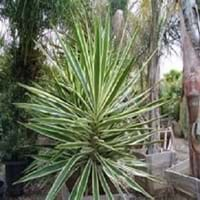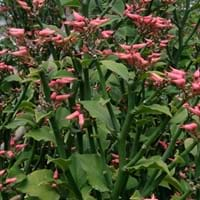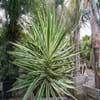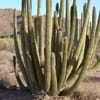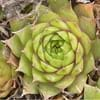Life Span
Perennial
Perennial
Origin
Southwestern United States, Mexico
Madagascar
Types
Yucca aloifolia 'Purpurea' , Yucca aloifolia
Euphorbia tithymaloides tithymaloides, Euphorbia tithymaloides angustifolia
Number of Varieties
Not Available
Habitat
coastal environs, Coastal sand dunes, mild coastal areas
subtropical regions, Tropical regions
USDA Hardiness Zone
7-9
9-13
AHS Heat Zone
9-7
Not Available
Sunset Zone
2a, 2b, 3a, 3b, 4, 5, 6, 7, 8, 9, 10, 11, 12, 13, 14, 15, 16, 17, 18, 19, 20, 21, 22, 23, 24
H2, 13, 23, 24
Habit
Rosette/Stemless
Upright/Erect
Flower Color
Pink, Ivory
Purple, Orange, Pink, Magenta
Flower Color Modifier
Bicolor
Not Available
Fruit Color
Brown
Not Available
Leaf Color in Spring
Green, Gray Green, Dark Green
Green, Gray Green, Burgundy
Leaf Color in Summer
Green, Gray Green, Dark Green
Green, Gray Green
Leaf Color in Fall
Green, Gray Green
Green, Gray Green
Leaf Color in Winter
Green, Gray Green, Dark Green
Green, Gray Green
Leaf Shape
long with sharp edges
Ovate
Plant Season
Spring, Summer, Fall, Winter
Spring, Summer, Fall, Winter
Sunlight
Full Sun
Full Sun, Partial Sun
Growth Rate
Very Slow
Fast
Type of Soil
Loam, Sand
Loam, Sand
The pH of Soil
Acidic, Neutral, Alkaline
Neutral, Alkaline
Soil Drainage
Well drained
Well drained
Bloom Time
Late Spring, Early Summer
Late Spring, Early Summer, Summer, Indeterminate
Tolerances
Drought, Salt
Drought
Where to Plant?
Ground
Container, Ground, Pot
How to Plant?
Cuttings, Divison
Seedlings, Softwood cuttings
Plant Maintenance
Medium
Medium
Watering Requirements
Keep the Soil well drained, Needs very little water
Average Water Needs, Do Not over Water
In Summer
Lots of watering
Lots of watering
In Spring
Moderate
Moderate
In Winter
Average Water
Average Water
Soil pH
Acidic, Neutral, Alkaline
Neutral, Alkaline
Soil Type
Loam, Sand
Loam, Sand
Soil Drainage Capacity
Well drained
Well drained
Sun Exposure
Full Sun
Full Sun, Partial Sun
Pruning
Remove damaged leaves, Remove dead branches, Remove dead leaves
Remove damaged leaves, Remove dead branches, Remove dead leaves
Fertilizers
All-Purpose Liquid Fertilizer
All-Purpose Liquid Fertilizer
Pests and Diseases
Leaf spot, Scale
Red blotch
Plant Tolerance
Drought, Salt
Drought
Flower Petal Number
Single
Single
Foliage Texture
Bold
Bold
Foliage Sheen
Matte
Matte
Attracts
Butterflies, Not Available
Hummingbirds
Allergy
Unknown
Carcinogenic, Diarrhea, Skin irritation, Toxic
Aesthetic Uses
Borders, Cottage Garden, Wild gardens, Woodland margins
Cottage Garden, Showy Purposes
Beauty Benefits
Not Available
Skin Problems
Environmental Uses
Air purification
Air purification
Medicinal Uses
No Medicinal Use
Asthma, Emetic, Inflammation, Intestinal worms
Part of Plant Used
Not Available
Leaves, Root
Other Uses
Beneficial species for attracting pollinators
Tea-like beverage can be brewed, Used as Ornamental plant, Used for its medicinal properties
Used As Indoor Plant
No
No
Used As Outdoor Plant
Yes
Yes
Garden Design
Rock Garden, Wall, Wildflower
Container, Houseplant, Mixed Border, Rock Garden, Wall, Tropical
Botanical Name
YUCCA harrimaniae
Euphorbia tithymaloides
Common Name
mound lily
Devil's Backbone
In Hindi
palm lily
Devil's Backbone
In German
palm lily
Devil's Backbone
In French
palm lily
Backbone du Diable
In Spanish
palm lily
El espinazo del diablo
In Greek
palm lily
Devil's Backbone
In Portuguese
palm lily
Espinha do Diabo
In Polish
palm lily
Kręgosłup diabła
In Latin
palm lily
Narum diaboli
Phylum
Magnoliophyta
Magnoliophyta
Class
Liliopsida
Magnoliopsida
Order
Liliales
Malpighiales
Family
Agavaceae
Crassulaceae
Clade
Angiosperms, Monocots
Angiosperms, Eudicots, Rosids
Tribe
Not Available
Euphorbieae
Subfamily
Agavoideae
Euphorbioideae
Number of Species
Not Available
Season and Care of Palm lily and Devils Backbone
Season and care of Palm lily and Devils Backbone is important to know. While considering everything about Palm lily and Devils Backbone Care, growing season is an essential factor. Palm lily season is Spring, Summer, Fall and Winter and Devils Backbone season is Spring, Summer, Fall and Winter. The type of soil for Palm lily is Loam, Sand and for Devils Backbone is Loam, Sand while the PH of soil for Palm lily is Acidic, Neutral, Alkaline and for Devils Backbone is Neutral, Alkaline.
Palm lily and Devils Backbone Physical Information
Palm lily and Devils Backbone physical information is very important for comparison. Palm lily height is 30.50 cm and width 30.50 cm whereas Devils Backbone height is 90.00 cm and width 30.00 cm. The color specification of Palm lily and Devils Backbone are as follows:
Palm lily flower color: Pink and Ivory
Palm lily leaf color: Green, Gray Green and Dark Green
Devils Backbone flower color: Purple, Orange, Pink and Magenta
- Devils Backbone leaf color: Green, Gray Green and Burgundy
Care of Palm lily and Devils Backbone
Care of Palm lily and Devils Backbone include pruning, fertilizers, watering etc. Palm lily pruning is done Remove damaged leaves, Remove dead branches and Remove dead leaves and Devils Backbone pruning is done Remove damaged leaves, Remove dead branches and Remove dead leaves. In summer Palm lily needs Lots of watering and in winter, it needs Average Water. Whereas, in summer Devils Backbone needs Lots of watering and in winter, it needs Average Water.
